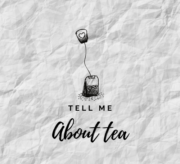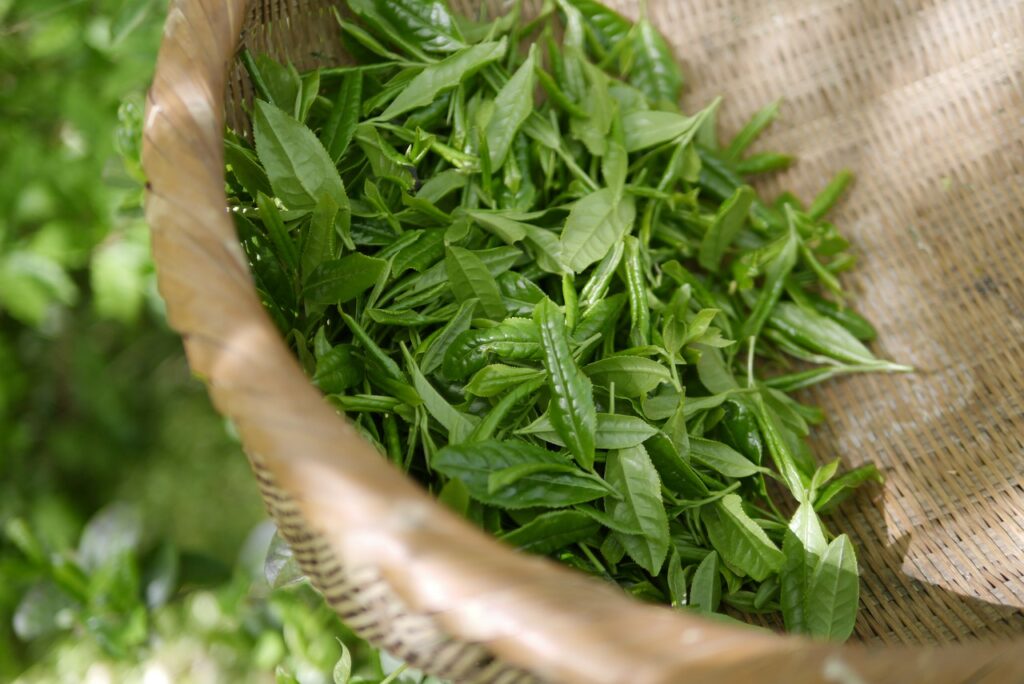I am a BIG fan of caffeine. It kick-starts my morning routine and has become a social facilitator: I often plan to meet friends and family at a coffee shop or café. Probably, you do, too. Caffeine is the world’s most widely consumed legal psychoactive drug. Many teas are caffeinated, and this may influence the type of tea you choose and the time of day you drink it. For example, some people drink chamomile in the evening because it’s relaxing and caffeine-free. Others may select a black or matcha tea for the morning precisely because it contains higher levels of caffeine.
But it’s not always that clear-cut. It can vary from cup to cup, even if you drink the same type every day but which tea has the least caffeine?
What is Caffeine?
Caffeine is a chemical stimulant that people drink or eat for mental alertness. It’s naturally occurring and is commonly found in coffee, teas, soft drinks and chocolate. It’s in energy drinks, too, and sometimes concentrated into pill form. As the BBC explains it, caffeine speeds up the messages travelling through the central nervous system to the brain – which is why we feel more alert. The Better Health website also writes that it ‘increases the circulation of chemicals such as cortisol and adrenaline in the body.’
Why Do Teas Have Different Amounts of Caffeine?
There are several reasons why teas have different amounts of caffeine. Water temperature is important. The time the leaves have steeped in the mug plays a role, too. Black teas are brewed longer than green teas, so the caffeine has more time to soak in the water. The Spruce Eats explains that caffeine content is often decided by how it’s brewed, more so than the ‘colour’ or the ‘variety’. It uses the example that if you were to brew a white tea like you would a cup of black tea, then the white tea (traditionally believed to be lower in caffeine) would actually have higher caffeine content.
It depends on the variety, too, and how it was harvested. The number of leaves in the pot or inside the bag affects the level of caffeine, too. Website Tula Vintage also writes that soil and altitude affect caffeine content – nitrogen-rich soils, for example, produce higher caffeine plants.
There’s also the distinction between herbal or fruit teas and what’s known as ‘true teas’. Green and black teas are ‘true teas’ because the leaves come from the Camellia Sinensis plant. Herbal and fruit trees are infusions of fruits, other leaves, etc. They’re not considered a ‘true tea’, which is why they’re caffeine-free.
Whether you’re using leaves or teabags makes a difference, too. Teabags contain broken leaves, so they’ll be more caffeine left behind in hot water afterwards. Older leaves will also have less caffeine than younger ones.
Ultimately, it’s not easy to accurately predict the amount of caffeine in the different types of non-herbal teas. Remember, too, that even caffeine-free tea will contain trace amounts.
We can make some general assumptions, however. For example, English Breakfast tea and Assam tend to have higher caffeine content. Oolong has caffeine. Green tea does, too (although around half as much as black tea). Matcha tea is more concentrated because it’s made from whole crushed leaves, so there’ll be more caffeine in that. White teas tend to be lower in caffeine than green teas.
Which Tea Has the Least Caffeine?
Technically, the teas with the least caffeine are the ones that aren’t “true teas”. These are the herbal teas, the fruit teas or the root teas. They don’t contain caffeine but be careful of fruit teas because they contain acid, eroding tooth enamel. It is possible to make a general assumption for which tea has the least caffeine. Whittard’s of Chelsea offer the following list.
- Matcha tea has 126 mg of caffeine
- Black tea has 37 mg
- Oolong and green tea has 31 mg
- White and yellow tea has 27 mg
- Puerh has 21g
- Fruit, herbal, and Rooibos are all caffeine-free.
People incorrectly assume that white tea has the least caffeine. It’s made from the leaves of the Camellia Sinensis plant: the same plant that produces green and black tea. White tea is the least processed of the three because the harvested buds and leads are younger and sun-dried. This doesn’t always mean that it’s low in caffeine, though. White tea has a higher amount of caffeine than other teas. The longer it’s brewed, the more caffeine it will have, but the caffeine is thrown out with the leaves because we only steep it for a short time. Spruce Eats states that a cup of white tea can contain between 6 and 75 milligrams of caffeine. Zest tea says that, on average, there’s around 40mg of caffeine in each serving of white tea, showing how varied the caffeine content can be even amongst the same variety or type.

